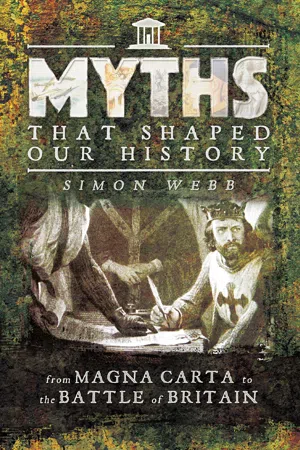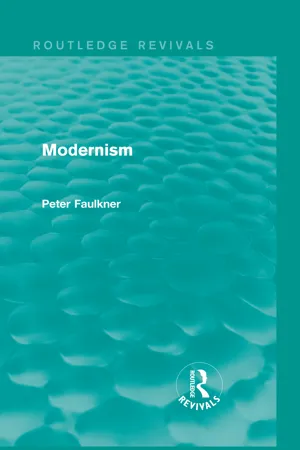Edwardian
The Edwardian era refers to the period of British history during the reign of King Edward VII, from 1901 to 1910. In literature, the term "Edwardian" is used to describe the literary works and cultural trends of this time, characterized by a focus on social issues, the decline of the aristocracy, and the emergence of modernism. This period saw the rise of prominent writers such as E.M. Forster and Virginia Woolf.
5 Key excerpts on "Edwardian"
- eBook - ePub
Myths That Shaped Our History
From Magna Carta to the Battle of Britain
- Simon Webb(Author)
- 2017(Publication Date)
- Pen & Sword History(Publisher)
...This is the Edwardian period, which is usually considered to have lasted from Queen Victoria’s death in 1901 to the outbreak of the First World War in the summer of 1914. Calling these years the ‘Edwardian’ period is something of a misnomer of course, for Edward VII, after whom the era was named, actually died in 1910. Nevertheless, most historians consider that 1914 marks the end of the Edwardian Era. The expression ‘Victorian’ can have negative connotations and may even be used in a pejorative sense as being synonymous with ‘Dickensian’. When we talk of ‘Victorian’ working conditions, we are calling to mind Oliver Twist and workhouses. ‘Edwardian’, on the other hand, has quite another meaning; the word is redolent of opulence, wealth and elegance. Those thirteen years of the Edwardian period are often thought to have been the high-water mark of empire, a time when Britain’s influence upon the world was at its zenith and the country was enjoying the fruits of the mightiest empire which the world had ever seen, one which covered a quarter of the earth’s land surface and included a fifth of the world’s population. The Boer War had just ended and Britain was to be at peace for the whole of those thirteen years. It was a time of new technology and increasing standards of living. Prosperity at home and power abroad are what the Edwardians are known for. It was the age of Elgar and Kipling, a time of certainty about Britain and its values. In later years, it would become customary to speak wistfully of the years ‘before the war’ when everything had been so much better, in so many ways. It was not until after the First World War, however, that the early years of the twentieth century began to be viewed with such nostalgia. It was then that a term was coined for the late Victorian and Edwardian period in Western Europe. The expression chosen to define this period was ‘La Belle Epoque’, which translates roughly as ‘the beautiful era’...
- eBook - ePub
Edwardian Culture
Beyond the Garden Party
- Samuel Shaw, Sarah Shaw, Naomi Carle(Authors)
- 2017(Publication Date)
- Routledge(Publisher)
...Here we bring together for the first time essays on literature, art, religion, history, architecture and marketing, drawing attention to the nuanced multiplicity of experience and cultural forms that existed during the period, and highlighting the extent to which the culture and politics of the Edwardian period were closely intertwined. While we are in agreement with Michael Hatt and Morna O’Neill that the Edwardian cultural scene deserves to be treated as a distinct period in its own right, this book also challenges the wisdom of placing rigid boundaries around nascent ideas and themes. 8 Recognizing that the boundaries between periods shouldn’t be regarded as watertight, we follow Jonathan Rose in proposing a ‘long Edwardian era’ spanning, loosely, the years 1895–1914, viewing the Victorian period as ending not with the death of Queen Victoria but rather in the year that saw the Oscar Wilde trial, the discovery of the x-ray, the publications of Thomas Hardy’s final novel Jude the Obscure and H. G. Wells’s The Time Machine, and the founding of the National Trust; and closing with the outbreak of War in 1914. 9 The inclusion in this volume of essays of writers such as Robert Louis Stevenson, who died in 1894, and of artists whose careers spanned from the 1900s into the 1920s, such as Francis Boileau Cadell, underscores that our boundaries are not strictly enforced...
- Josephine Guy, Ian Small(Authors)
- 2010(Publication Date)
- Routledge(Publisher)
...Guide to further reading The contexts of nineteenth-century literature Details about the contexts of nineteenth-century literature are available from general historical studies which describe the major social, intellectual, political and cultural developments in the century as they relate to literary works (it is usual to find separate volumes devoted to Romantic-period and Victorian literature). Examples include the following. Gilmour, Robin (1993) The Victorian Period: The Intellectual and Cultural Context of English Literature, 1830–1890, Harlow: Longman. Jarvis, Robin (2004) The Romantic Period: The Intellectual and Cultural Context of English Literature, Harlow: Longman. Such volumes are usefully read alongside general historical studies of the period, such as these two. Daunton, M. J. (1995) Progress and Poverty: An Economic and Social History of Britain, 1700–1850, Oxford: Oxford University Press. McCord, Norman (1991) British History 1815–1906, Oxford: Oxford University Press. There are also a number of useful anthologies of essays examining various aspects of nineteenth-century culture as they relate to the literature of the period. Curren, Stuart (ed.) (1993) The Cambridge Companion to British Romanticism, Cambridge: Cambridge University Press. McCalman, Iain (ed.) (1999) An Oxford Companion to the Romantic Age: British Culture 1776–1832, Oxford: Oxford University Press. O’Gorman, Francis (ed.) (2005) A Concise Companion to the Victorian Novel, Oxford: Blackwell. Shattock, Joanne (ed.) (2010) The Cambridge Companion to English Literature: 1830–1914, Cambridge: Cambridge University Press. Tucker, Herbert F. (ed.) (1999) A Companion to Victorian Literature and Culture, Malden, MA: Blackwell. Form, style and genre There are many individual studies devoted to the treatment of formal developments in nineteenth-century poetry, the novel, drama and criticism respectively; examples are given below...
- eBook - ePub
- Peter Faulkner(Author)
- 2013(Publication Date)
- Routledge(Publisher)
...2 The era of Modernism: 1910–1930 Socially the period was one of widespread turmoil and suffering, including the 1914–18 war and the beginning of the economic depression. Yet culturally it was a great creative period, which produced such works as Eliot’s The Waste Land, Pound’s Hugh Selwyn Mauberley, Joyce’s Ulysses, Lawrence’s Women in Love, Virginia Woolf’s To the Lighthouse, and Yeats’ The Tower, to say nothing of the contemporary work of Rilke, Blok, Mayakovsky, Pasternak, Machado, Apollinaire, Ungaretti, Alberti, Mann, Proust, Kafka, and Svevo. And this is in literature alone. The challenge to the artist is always to combine openness to experience with formal control, and the art of this troubled period often thrived on the challenge. The discussion in this section is at first general and then specific, focusing in the later parts on the critical ideas of two leading modernists, Eliot and Virginia Woolf, and ending with two major modernist works, Pound’s Mauberley and Joyce’s Ulysses, and with a general account of D. H. Lawrence. General considerations Any ascription of dates to cultural movements is bound to be arbitrary, but there can be little doubt that the two decades 1910–30 constitute an intelligible unity from the point of view of the present discussion. (Obviously historians of politics, war or economics will see the century in a different shape – but that kind of plural vision is one of the central recognitions of Modernism itself.) There can be valid disagreement about the extent of the interaction between culture and society, but it is evident that modernist art is very much aware of the state of the world around it. Thus many kinds of facts about the early twentieth century are relevant. In general what was happening can be seen as a breaking-up (more or less violent in different countries and areas of activity) of the nineteenth-century consensus...
- eBook - ePub
The Suffragette Bombers
Britain's Forgotten Terrorists
- Simon Webb(Author)
- 2014(Publication Date)
- Pen & Sword History(Publisher)
...Chapter Two The Edwardian World ‘ The Great Unrest ’ (Popular term used to refer to the period of disturbance in 1911) The suffragettes were a product of Edwardian Britain. This period began with the death of Queen Victoria in 1901 and ended with the death of her son, Edward VII, ten years later; although the term ‘Edwardian’ is often extended to include the years up to the outbreak of war in 1914. It is the wider definition that will be used here. For many of us today, this age has become a byword for stability and order, the golden heyday of imperial power brought to an abrupt end by the First World War. In fact, this view is misleading. It was, in fact, a time of chaos and violent change, when the governments of the day faced problems that eclipse anything we see in modern Britain. These included the greatest constitutional crisis for centuries, some of the worst rioting and disorder ever seen on the British mainland, the threat of revolution and the very real possibility of the United Kingdom being engulfed by civil war. Add to this an arms race and severe unemployment, and you begin to see why reformation of the franchise to include women was not top of the agenda for the Liberal administrations which held power at that time. It is impossible to understand the suffragettes and see where they fitted in during the early part of the twentieth century without knowing what Britain was really like at that time. Unfortunately, the mental image that we have of that era has been so shaped and modified by its representation in popular culture, that this is no easy task. Novels, films and television all too often conspire to present us with a strange and rosy picture, not only of the suffragettes, but also the world in which they operated. A typical example of the way that Edwardian Britain is treated in films, with powerful and enduring images that seep imperceptibly into our subconscious, is that childhood classic, Mary Poppins...




